CNN demonstration shows power of Chelsea devices
Story highlights
- Devices placed in Manhattan neighborhood contained "high explosive"
- One ingredient may mean the device maker may have received overseas training
(CNN)The
explosive ingredients in the devices placed in New York's Chelsea
neighborhood were potent and had the potential to produce an explosion
significantly more powerful than the devices used in the 2013 Boston
bombings, according to a test demonstration filmed by CNN.
CNN
contacted Sidney Alford, founder of Alford Technologies, a British
company specializing in explosives, to test detonate a device closely
replicating the pressure cooker bombs allegedly deposited last Saturday
night in Manhattan by Ahmad Khan Rahami.
In
describing this demonstration, CNN has taken care not to provide
details of bomb components that are not already widely known.
Law
enforcement sources tell CNN that according to an initial assessment of
the pressure cooker devices, they contained aluminum powder, ammonium
nitrate and HMTD.
Alford told CNN
that the correct preparation of these components would likely have
resulted in a "much more violent explosive," pound for pound, than the
devices in Boston.
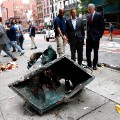
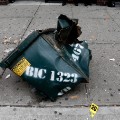

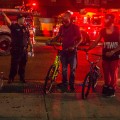
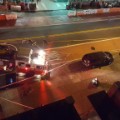
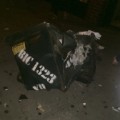


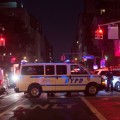
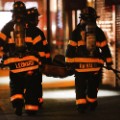
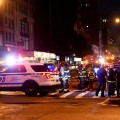

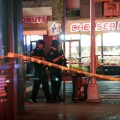
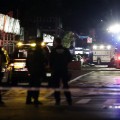
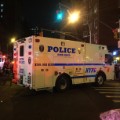

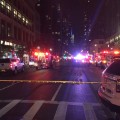
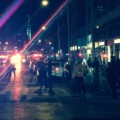
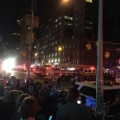
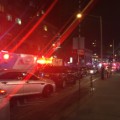
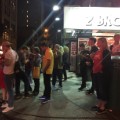
The
test detonation, which CNN filmed on Thursday in the United Kingdom,
produced a powerful fireball scattering shrapnel and small fragments of
the pressure cooker over a wide area.
Alford
placed two boards of plywood in the vicinity of the pressure cooker
bomb he detonated to illustrate the force of the blast. The explosion
and shrapnel pierced the wood.
"Anything that goes through both these pieces of wood has great lethal potential," Alford told CNN.
"This
was a vicious device. I would not have been surprised if 20 people had
been killed in New York," Alford said after the demonstration.
Placement of bomb may have saved lives
According
to U.S. court documents, the device that went off in Chelsea appears to
have been placed in a heavy metal dumpster. Alford believes that this
may have prevented significant loss of life by containing the force of
the blast.
Both the Boston and New
York devices involved pressure cookers and shrapnel, but the Boston
devices contained black powder extracted from fireworks, a much weaker
form of explosive. The pipe bomb device set off in a trash can along the
route of a U.S. Marines charity race in New Jersey on Saturday morning
also included black powder, and thus would have been also significantly
less potent than the Chelsea devices, according to Alford.
Authorities
believe Rahami was linked to that device, and to the backpack left near
a train station in Elizabeth, New Jersey. Authorities have not yet
revealed what was inside the devices recovered in that backpack.
Put simply, according to U.S. court documents, the Chelsea bombs contained high explosive, while the Boston devices did not.
This
is where the science comes in. Alford explains that high explosive is a
term used for explosive that produces what bomb chemists call
"detonation."
"This is where the
decomposition takes place in the very short time that it takes a
shock-wave to pass through the explosive, generating a mass of hot gas
that expands at a velocity greatly exceeding the speed of sound," he
said.
The Boston devices and the
New Jersey pipe bomb did not explode at anything near this velocity
because they did not contain high explosive.
Looking for clues in shrapnel, metal pieces
Alford
said that if the Chelsea bomb "detonated" it would likely have blown
the pressure cooker into many very small fragments, which would have
acted as shrapnel and penetrated victims' bodies. If the bomber had not
got the recipe right then it is possible the device did not achieve
"detonation."
Alford said a
tell-tale sign of an explosion short of detonation would be if the
pressure cookers had exploded only into larger pieces. But according to
court documents, investigators discovered fragmentation from the Chelsea
bomb as far as 650 feet away and the force of the blast shattered
windows 400 feet away and three stories high. The force of the blast
propelled the metal dumpster 120 feet across the street. Twenty-nine
people were injured.
As law enforcement cordoned off the area, investigators found an unexploded pressure cooker four blocks away.
The
combination of aluminum powder and ammonium nitrate produces an
explosive substance similar in composition to Tannerite, a patented
substance used on some shooting ranges in the United States to create
spectacular explosions when a target is hit by a bullet.
Both aluminum powder and ammonium nitrate can be purchased for this specific purpose in the United States.
"It's
made very easy for the amateur operator, rather than someone trained,
because you can buy kits that contain the two components. That makes
bomb-making much easier as far as the main charge is concerned because
you need to know no chemistry at all," Alford told CNN.
Rifle
bullets produce enough energy to detonate the explosive mixture. But in
the Chelsea pressure cooker devices, a small amount of HMTD could have
been used to set off a "main charge" of aluminum powder-ammoniun nitrate
mixture, according to Alford.
HMTD
has been used to build detonators in multiple al Qaeda plots against
the West. A case in point was the July 7, 2005, London bombings. The
British al Qaeda operatives who plotted to explode 10 transatlantic
passenger aircraft in 2006 also planned to build detonators containing
HMTD, according to court records.
Overseas training to make a device deadlier?
HMTD has many similarities to TATP, another high explosive used by terrorist groups in plots against the West.
The
chemicals necessary to make both of them can be easily purchased in the
United States and instructions for how to make them can easily be found
online. HMTD was used by militaries in the years after World War I, but
was subsequently abandoned in favor of more stable compounds.
Once
dry, the reactiveness of HMTD and TATP means there is a risk of
accidental detonation if they are jostled or exposed to high
temperatures.
The use of HMTD in
the Chelsea devices may point to overseas training. It is tricky to make
for individuals without a chemistry background and is difficult to
perfect without experimentation. There have been very few Islamist
terrorist plots in the West since 9/11 in which plotters have managed to
make HMTD or TATP without overseas training.
One
of the few exceptions was Andrew Ibrahim, a British self-radicalized
extremist arrested in 2008 who made HMTD to insert inside a suicide bomb
vest without ever apparently getting training overseas. According to
Alford, it is possible to make HMTD just by downloading instructions
from the internet, so it does not necessarily indicate overseas
training.
One key question is, did Rahami receive bomb-making training from a militant group while he was overseas?
Investigators are probing lengthy stays
by Rahami in Afghanistan and Pakistan between 2011 and 2014. His travel
pattern has similarities to that of Times Square bomber Faisal Shazad,
an American recruited by the Pakistani Taliban, who trained him in
explosives in the tribal areas of Pakistan. Shahzad, who like Rahami was
not on the radar screen of U.S. counterterrorism agencies, attempted to
set off a car bomb in Times Square in May 2010 half a year after
receiving training.












































No comments:
Post a Comment